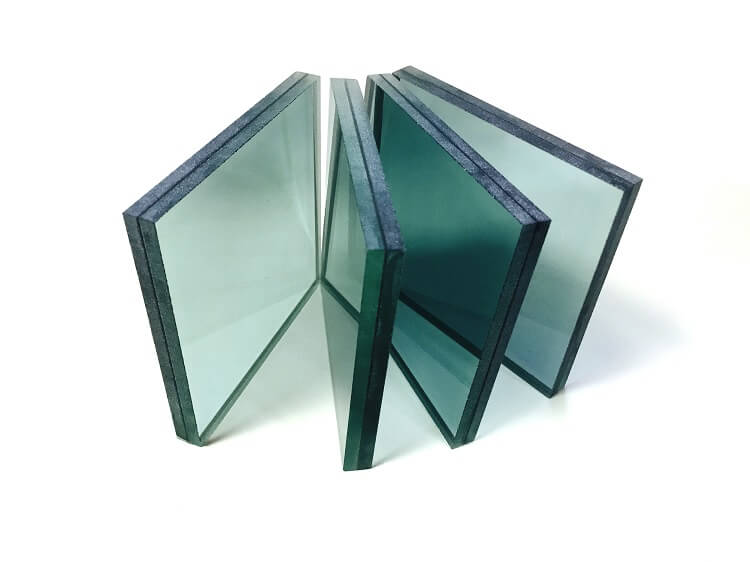Glass has evolved from its humble origins to encompass manifold functionalities, unheard of a couple of decades ago. Today, it is a celebrated building material among architects and interior designers, used in various structures such as skywalks, walkways, flooring, etc. Yet, one of the most common misconceptions among people regarding glass is that it breaks easily and when it does so, can lead to serious injuries. And for such concerns, there exists a product tough enough to resist heavy impact – laminated glass.
If you’re looking for suitable safety and security glass for the windows of your home, laminated glass may be your best choice. Laminated glass is a layered type of glass with a laminated sheet resting between 2 layers of glass. This laminated sheet is usually made of polyvinyl butyral or PVB and acts as a sort of adhesive to reduce danger in case the glass gets broken. The number of layers can extend up to 9 as well, keeping in mind that every 2 sheets of glass will have a film of PVB between them.
How is Laminated Glass Made?
Laminated glass is manufactured by adhering two or more layers of glass together with a flexible PVB interlayer. This takes place through a heat and pressure process in which the chemical bond formed between the glass and PVB interlayer does not merely join them but ‘conjoins’ them to create an entirely new material.
What are the Advantages Of Laminated Glass?
Laminated glass is generally used for safety and security purposes. This is because even if the glass is broken, the PVB layers make the glass layers stick to them so that it does not fall out of the window frame. This is especially useful in households with small children. The PVB layers reduce the transmission of UV rays into the house, decreasing the likelihood of skin diseases.
It is much more durable than ordinary glass, even though its installation does not require any special effort or time. It can even resist impact from pieces of metal and rocks. Laminated glass is also much less vulnerable to changes in temperature and pressure than ordinary glass. The viscoelastic properties of the specialised PVB interlayer make laminated glass an excellent sound insulator. This is an advantage if there are old people or pets inside the house.
What Are the Uses of Laminated Glass?
The most common use of laminated glass is in automobile windshields. This is because laminated glass is much stronger than normal annealed glass and will not easily break, but on the rare occasion that it does break, it will not shatter into sharp shards, but the glass pieces will stick together, forming a spider web-like pattern, thereby reducing the chances of serious injuries.
Laminated glass is a good choice for use in buildings when it comes to providing protection against disasters such as a fire or an earthquake. Laminated glass is more resistant to fire than ordinary glass, which means that it will take time to shatter, during which the inhabitants of the building can escape. During an earthquake, the glass does not shatter immediately and falls out of its frames, making it a lot safer for people to pass by windows and get outside. This application of laminated glass extends to both residential and commercial spaces.
Glass canopies have become a popular trend in exterior decoration for their aesthetics and practicality. These canopies are generally made using laminated glass, as it is harsh weather-resistant while at the same time allowing natural light to enter the space, giving it an overall more spacious appearance. And what’s more, it keeps harmful UV rays at bay.
Shop windows and doors are often made of laminated glass so that they hold in case of a break-in attempt since shops are particularly vulnerable to robberies. For the same reason, laminated glass doors and windows are even installed in the construction of homes.
Balcony railings are often built using laminated glass owing to their impact-resistance properties and the aesthetic appeal that they render. Moreover, the glass does not obstruct the outside view, even for little kids.
Nowadays, more and more people are opting for the option of an “infinity swimming pool” or a boundary-less pool that gives the illusion of water flowing over its edge. Such pools are generally constructed using laminated glass since it is shatter-proof and highly pressure-resistant.
Its resistance to changes in temperature makes it a good candidate for the construction of skylights. Skylights made of laminated glass will not break or fall even under extreme weather conditions like a hailstorm. Other structural applications of laminated glass can be found in the making of glass railings, curtain walls, glass facades, glass roofs, etc.
Buildings with glass floors typically use laminated glass because ordinary glass would break under the pressure of all the foot traffic it would be subjected to. Overhead glass structures in buildings are also made of laminated glass, as it will not break and rain down into tiny pieces in case of an impact.
Protective cases in jewellery shops, art galleries, aquariums, banks, money exchange centres, showrooms, and other such places that house valuables are made of laminated glass due to matters of safety. Furthermore, laminated glass can also be used to enhance the visual appeal of a space, as it is available in colourful and fabricated variants.
Looking for reliable laminated glass solutions? Look no further than AIS Glass. Our variants of laminated glass are designed to provide safety to your home or office and to let you live a life of peace without the interference of noise coming from the outside, especially if you live amid a bustling city. At AIS Glass, we pride ourselves on providing the most reliable glass solutions for homes, offices, shops, automobiles, or any other purpose. For end-to-end glass solutions that guarantee both structural integrity and aesthetic value, contact AIS Glass today!

